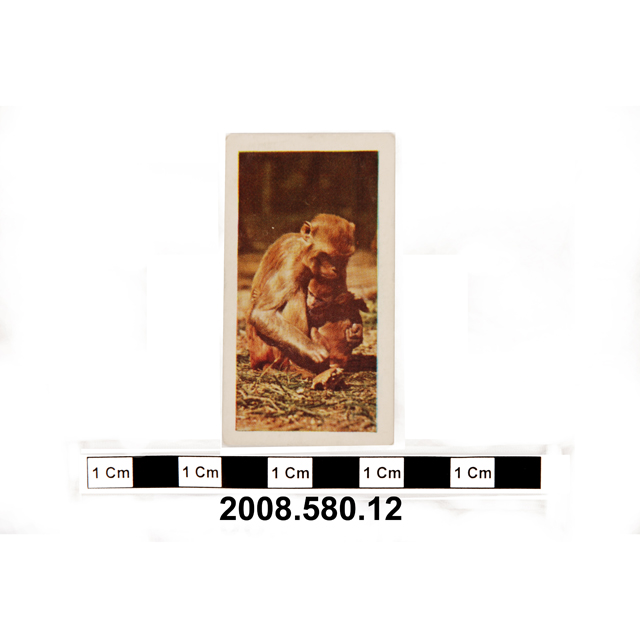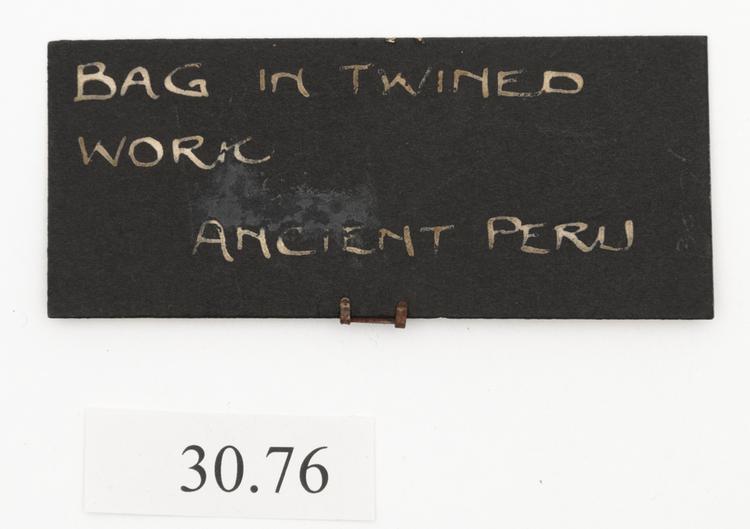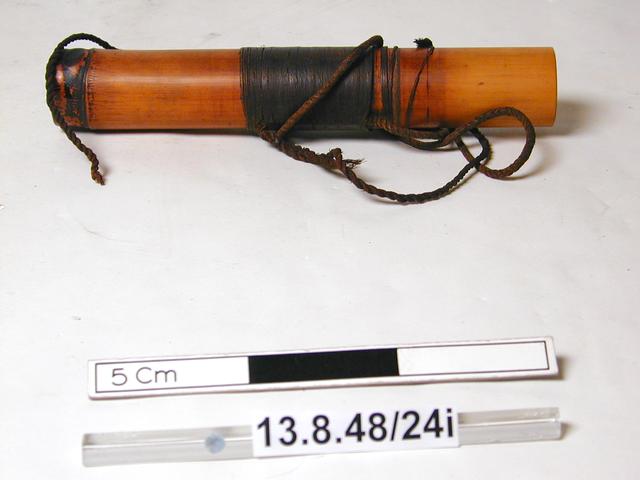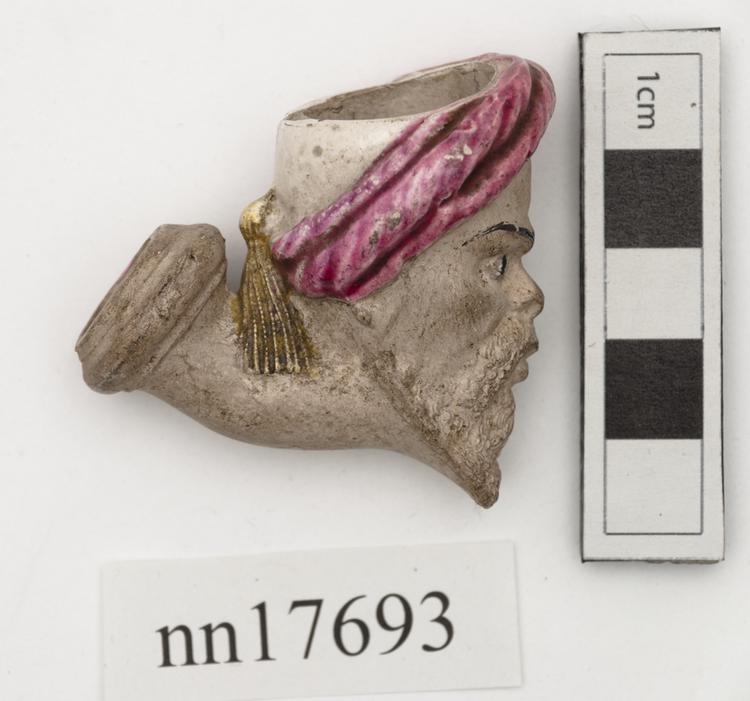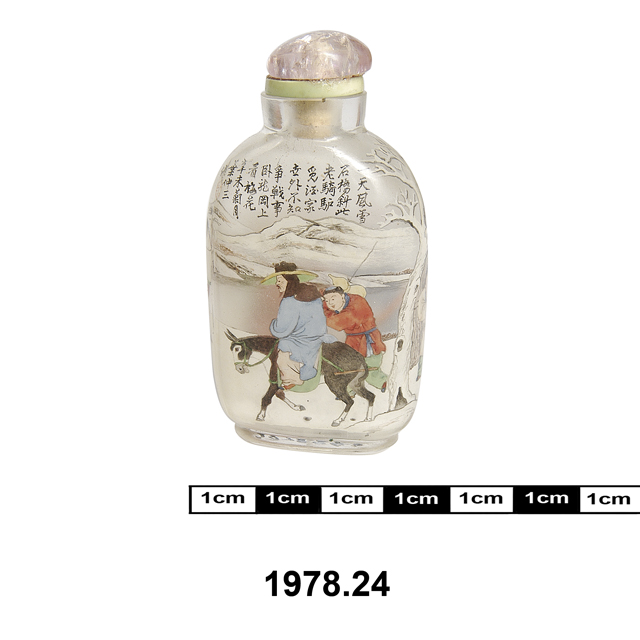
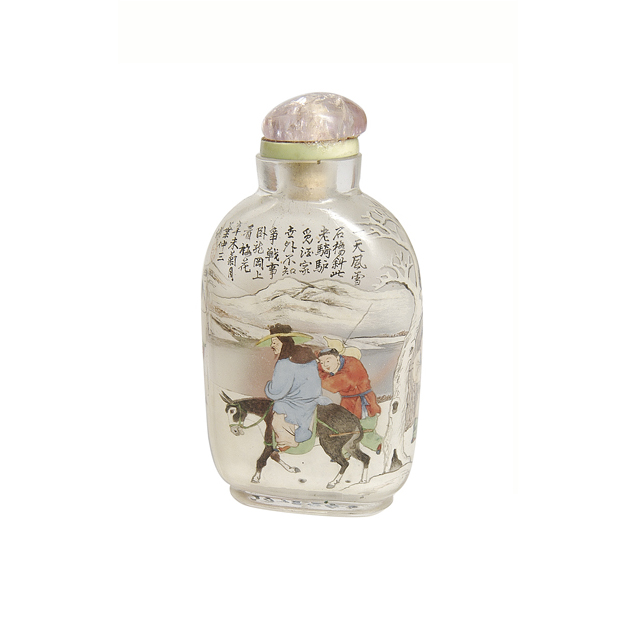
Glass perfume bottle, with stopper, painted on the inside with copies of scenes from a 4000 year old painting, 'San ch'ing ke liang'. This method of painting on the inside of glass bottles was common in Shandong province, done by artists who would lie down and look up into the glass bottles in order to paint them. They were painted with very fine bamboo sticks made supple by holding them in a flame.
Notes from the donor accompanying the bottle explain in more detail the imagery of the paintings, which are copies of the 4000 year old painting 'San ch'ing ke liang'. On one side, the man represented in blue is Meng Fan Jan from the T'ang dynasty. He was a professor of philosophy and a poet, and came from the northwest near Hankow. The scene depicts Meng Fan Jan out in the snow with his servant searching for the Mei Hua, an artist and poet. The poem on the bottle is by him, and speaks of the beauty of the spring flowers, blooming in spite of the cold weather. On the opposite side of the bottle, the scene tells a legend of three men joining a brotherhood. The gentleman in red is Liu Pei from the Han Dynasty. The man in green has become a brother in the K'ou T'ou brotherhood, and together they have asked a third man, Kuan Kung, to join them, but he has not come. Instead, Chu Ke Liang, an abbot in a Chief Temple, is asked three times if he would join the brotherhood with them. Twice he refuses to see them: Mei t'sai chia'. But despite not wanting to meet them, the two brothers do not give up, and on the third time Chu Ke Liang agrees to join. Later Liu Pei became the king of Ssu Ch'uan whereupon he asked the former Abbot to become his first minister, to which Chu Ke Liang agreed. Chu Ke Liang's good example greatly influenced the people of the kingdom to live in peace, and happiness and prosperity prevailed.



